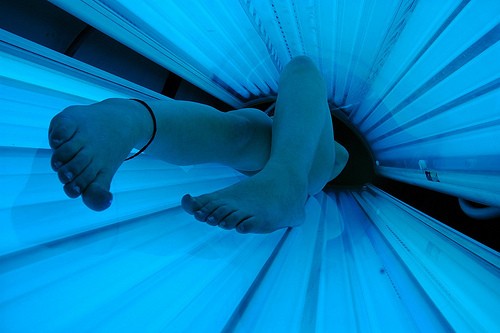State Laws Push Away Tanning Teens, CDC Approves

Female high school students are reportedly less likely to frequent indoor tanning salons in states with stricter tanning laws, compared to teens in states without any laws, according to new research out of the Centers for Disease Control and Prevention (CDC).
Researchers, led by Dr. Grey Guy of the CDC, reviewed the results of the past several National Youth Risk Surveys of U.S. high school students in grades 9-12, comparing state by state numbers on youth tanning behavior with each state's indoor tanning laws. The data showed that nearly one fourth of all female high school students in the U.S. used indoor tanning, with a significantly smaller percent (6.5) of males doing the same.
Interestingly, the study showed that among females, the odds that they would engage in indoor tanning dropped by 30 percent in states with any indoor tanning laws at all. These laws could include even the simplest of things, such as required protective eye wear or warning signs about over exposure ultra violet light. In states with even more restrictive laws, such as required parental permission for minors, the odds of female high school student using tanning salons dropped by a whopping 42 percent, compared to the odds for teen tanning salon use in unrestricted states.
The study also noted that there was no significant correlation between salon use and state laws in the much smaller tanning teen male demographic.
But so what? Why does the CDC care about findings like this? It may have something to do with the fact that skin cancer remains to be the most common form of cancer in the U.S., with approximately 60,000 cases of melanoma, the most dangerous form of skin cancer, diagnosed annually, according to the CDC. It is commonly believed that overexposure to ultraviolet radiation, the same light used in tanning beds, could contribute to an increased risk of melanoma in young adults.
The CDC likely shares the beliefs. In fact, a study conducted last November by CDC researchers showed that indoor tanning use before the age of 25 increases the risk of getting melanoma by 40 to 102 percent. Worse, the same study showed a melanoma risk increase of 1.8 percent with each tanning session per year, especially among fair-skinned female high school students.
Researchers of both studies urge state officials to raise access and age restrictions in tanning salons. Dissuading minors from using tanning beds, they claim, could significantly lower the number of yearly skin cancer cases.
The first study mentioned was published in the American Journal of Public Health on February 14.
The second study was published in the Journal of the American Medical Association: Internal Medicine on November 11.
Feb 14, 2014 12:23 PM EST





